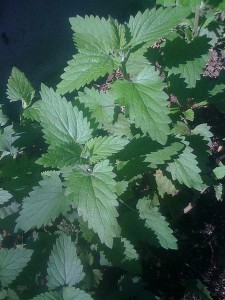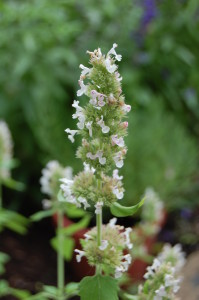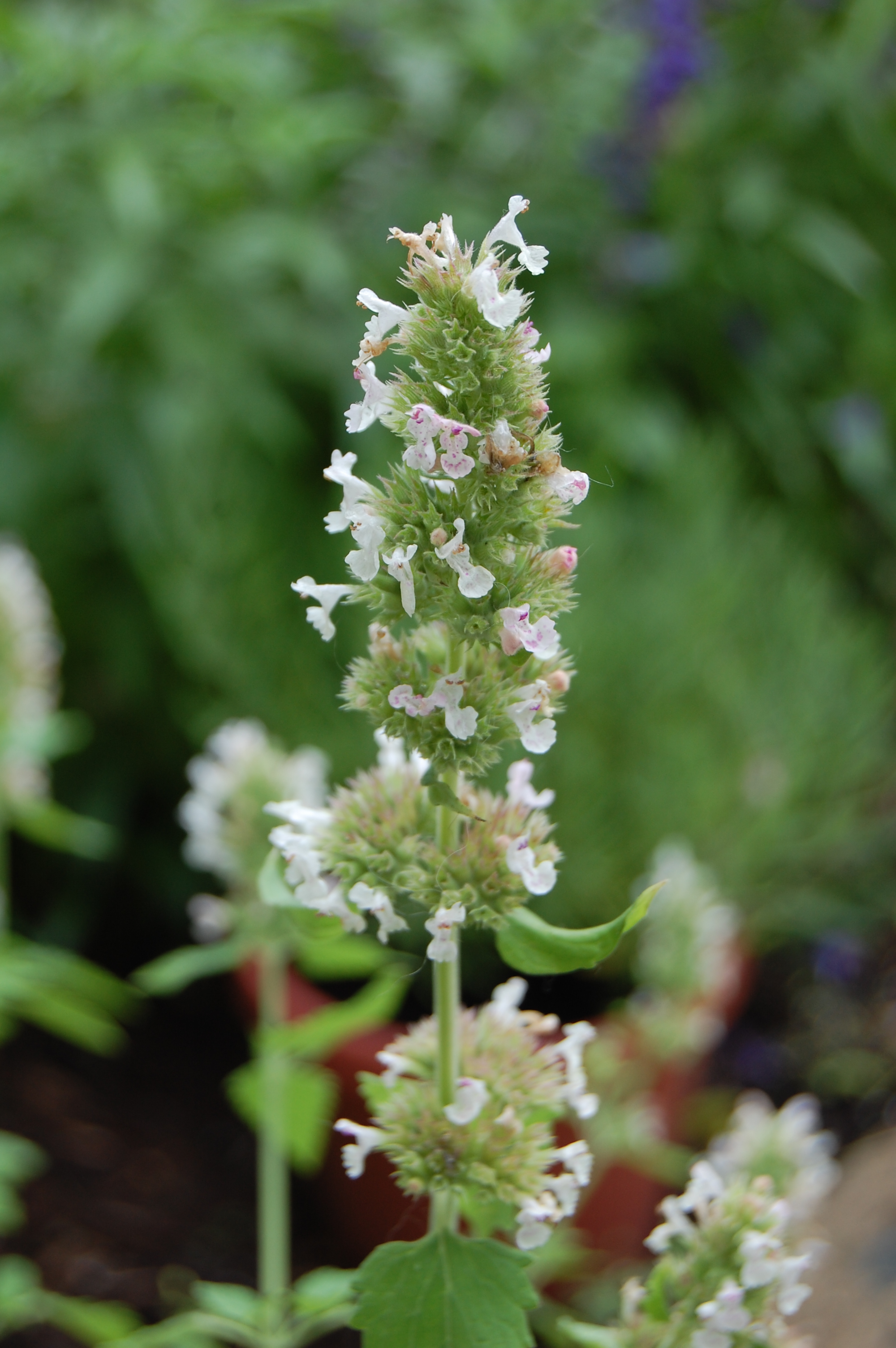 Everyone knows that catnip makes cats crazy but fewer people know that catnip makes a soothing tea for humans. The tea has a light minty flavor because catnip is a member of the mint family. The plants have the characteristic square stem, serrated leaves and flower spikes of mints.
Everyone knows that catnip makes cats crazy but fewer people know that catnip makes a soothing tea for humans. The tea has a light minty flavor because catnip is a member of the mint family. The plants have the characteristic square stem, serrated leaves and flower spikes of mints.
Catnip (Nepeta cataria) is a short-lived herbaceous perennial that is native to southern and eastern Europe, the Middle East through central Asia and parts of China. It has become naturalized throughout the rest of Europe and is now found in North America and New Zealand thanks to the European colonists.
It is hardy in zones 3 through 9. Plant it in well-drained soil and water sparingly. Catnip likes to be dry. It is drought tolerant so you can use it in a xeriscape. Like most mints, it prefers full sun, but will tolerate a little shade. Full grown plants grow 2’ to 3’ tall. It is recommended that you pinch the plants to make them bushier. Catnip has a tendency to get tall and leggy and fall over. The flowers are white or lavender and bloom time is late spring through fall if you deadhead them. 
Apartment dwellers will be happy to hear that catnip can be grown indoors provided you have a sunny window that gets a minimum of 5 hours of sun each day. If you don’t have a window that meets those requirements, you can provide supplemental lighting using a plain old fluorescent bulb. Make sure that your plant has good drainage. Allow it to dry out between waterings. You can use a weak liquid fertilizer regularly. Used full strength, your plants will get tall and leggy. Plants grown indoors will not be as tall nor as potent as plants grown outdoors. Be aware that some people have complained that catnip smells like a skunk so they do not grow it indoors. And, of course, protect your plants from your cat(s).
Catnip is easy to propagate by cuttings or seed. To propagate by cuttings, snip off the growing tips or leaf tips, dip in rooting hormone and then plant in a sterile medium. Using a mister, keep your cuttings moist, not wet.
If you don’t deadhead your catnip flowers, you will have many volunteers in your garden from the seeds. It can become invasive if you are not watchful.
You can start seeds indoors 8 weeks before your last frost. Barely cover the seeds and using a mister, keep them moist but not wet. Germination should occur in 7 to 10 days. You can set your plants out in your garden after all danger of frost has passed.
You can start harvesting leaves when your plants reach a height of 8 inches and continue harvesting throughout the growing season. The best time of day to harvest your leaves is late morning after the dew has dried. You can air dry the leaves and flowers or they can be dried in your oven (110⁰F for 2 to 3 hours), microwave (1-2 minutes on high) or food dehydrator. Store your dried catnip in tightly sealed, glass containers in a cool, dry place with no sunlight.
To make catnip tea, bring your water to a boil and transfer to a non-metal teapot. Use 2 tablespoons of fresh leaves or flowers, or 1 tablespoon of dried leaves or flowers to the pot for each cup of water, plus an extra 2 tablespoons of fresh or 1 tablespoon of dried “for the pot.” Don’t forget to use more herbs if making ice tea to allow for the extra water from the melting ice cubes. Steep for five minutes or until the tea reaches your desired strength, strain out the herbs and enjoy!


14 Comments on “Catnip”
How often can we give catnip to our cat – is it OK for daily use or should it be given sparingly?
In addition to being an herb lady, I am also a cat lady. A stimulant like catnip should only be given to cats as a special treat, no more than a few times a week. The chemicals in the catnip stimulate the brains of cats and too much stimulation can result in brain injury.
My catnip hates being transplanted. I can only grow them.in pots and when they grow big I’m scared to repot them.
Also they dont flower. In some plants the leaves have started curling …seems like a bug or something. What should I do?
If your catnip is not flowering, then it is not getting enough sunlight. Move it to a sunnier spot. The curling leaves indicates that the plants are not getting enough water.
Remember, the soil in pots dries out more quickly than the soil in your yard. Plants growing in containers need to be watered more often than plants growing in your garden. I usually water my outdoor containers every day, more often on extremely hot days. You can prune catnip to keep it small so that you don’t need to repot it.
Hi, if my catnip is done flowering, are the catnip buds still potent or does
it need to be harvested before finishing blooming?
Thanks,
Catnip leaves are used for teas and cats, not the flowers or the buds. I recommend removing the flowers before they go to seed to prevent catnip from spreading and taking over your garden.
Thanks for this article. I am growing catnip from seed for the first time this year, all inside. It is all VERY HEALTHY and I water it all every day. I did just transplant a bunch and it took a few days before they got happy again. I watered with root stimulant and natural fertilizer “tea” after the repotting. None have flowered yet. They are inside a indoor greenhouse with grow lights for 10 hours a day. They are getting big and I was starting to think about making my own cat toys. I will wait until they bloom and start the drying process.
cheers from Colorado,
Angela
If I want a really bushy plant, how often should I prune it ? I’m growing it as a cash crop so I want the biggest yeild possible.
Catnip is a member of the mint family so you can prune it like you prune mint. Cut the whole plant down to about 6 inches. It will regrow bushier. It is fast growing so you can probably do this 2 – 3 times during the growing season, depending on your growing zone.
The leaves on my catnip sprouts have started curling, but I’m struggling to find out why with my google searches. Any idea why that would happen?
Catnip is a drought tolerant plant, meaning it likes to be dry. You may be over watering it.
Thank you! I’ll let the soil get really dry in between watering and see how it goes!
I’m curious, I thought catnip was a perennial. I am in zone 3/4. We just had a very mild winter and my huge catnip plants were my only perennials that didn’t come back this year. My cats are very disappointed. I had two huge plants, I believe I planted them two or three years ago. What could have happened? They were in full sun, and were thriving until they went dormant. 🤷♀️
Catnip is a short-lived perennial which means that it doesn’t live as long as most perennials. Another reason that comes to mind as to why your catnip did not survive the winter is if your winter was very mild, you probably got more rain than snow. Catnip is drought-tolerant. It likes to be dry. Your winter may have been too wet for it.